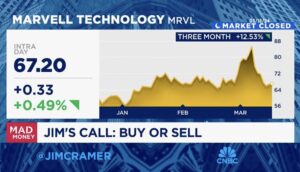
When you make purchases through our links we may earn a small commission.

Photo Credit: Unsplash
The advent of artificial intelligence (AI) technologies has ushered in a new era in labor markets, revolutionizing the way we work and transforming industries across the board. While the promises of increased efficiency, productivity, and economic growth are evident, the inevitable displacement of jobs has raised concerns about the security of healthcare coverage for workers. In this context, the implementation of a baseline healthcare for all system with heightened efficiency through a single-payer approach emerges as a vital strategy to alleviate the burden of job losses and secure healthcare access for all citizens.
The Shifting Landscape of Labor Markets
AI technologies have rapidly permeated various industries, from manufacturing and customer service to data analysis and even medical diagnostics. As AI-driven automation continues to replace routine tasks, a surge in job losses, particularly in traditionally labor-intensive sectors, has become inevitable. This transition to an AI-centric labor market demands a comprehensive approach to safeguarding healthcare coverage in the face of mounting unemployment rates.
The Single-Payer Healthcare System: A Foundation for Equitable Coverage
A single-payer healthcare system, where the government is the sole payer for healthcare services, offers a promising solution to address the challenges posed by evolving labor markets. By providing a universal baseline of healthcare coverage, regardless of employment status, single-payer systems ensure that individuals have access to essential medical services irrespective of their job situation. This arrangement prevents the sudden loss of healthcare coverage due to job displacement, thereby enhancing social safety nets.
Alleviating Healthcare Coverage Disruptions
Continuous Coverage: Single-payer systems remove the dependency on employer-sponsored health insurance. In an era of AI-driven job shifts, workers are less tied to specific employers, allowing for smoother transitions between different roles and industries. This flexibility reduces the risk of coverage gaps and minimizes disruptions in healthcare access.
Portability: With a single-payer system, individuals can maintain their healthcare coverage regardless of job changes. This portability is particularly crucial as workers increasingly engage in short-term contracts, freelance work, and project-based assignments facilitated by AI labor platforms.
Decoupling Health Benefits from Employment: A single-payer approach decouples healthcare coverage from employment, shifting the burden of providing healthcare services away from employers. As a result, businesses can adapt more easily to changing market dynamics without being encumbered by the escalating costs of employee healthcare.
Enhanced Efficiency through Technological Integration
Data-Driven Healthcare Management: Single-payer systems can harness the power of AI and data analytics to optimize healthcare allocation, predict medical needs, and prevent diseases. This data-driven approach ensures efficient resource allocation and better health outcomes, reducing the strain on the healthcare system.
Telemedicine and AI Diagnostics: The integration of telemedicine and AI-powered diagnostic tools into the healthcare system improves accessibility and reduces the need for physical visits. Patients can receive timely care and guidance, even in regions with limited medical facilities.
Preventive Healthcare: AI-driven health monitoring and early detection systems enable proactive interventions, reducing the incidence of severe illnesses. This approach not only promotes public health but also minimizes the strain on the healthcare system by preventing avoidable hospitalizations.
As the global economy transitions into a new phase defined by AI-driven labor markets, the stability of healthcare coverage becomes a paramount concern. Implementing a single-payer system with heightened efficiency can serve as a cornerstone in mitigating the impact of job losses on healthcare access. By ensuring continuous coverage, portability, and decoupling health benefits from employment, such a system can alleviate the burden on individuals and employers alike. Furthermore, integrating AI technologies into healthcare management enhances resource allocation and preventive care, fostering a healthier population in the face of evolving labor dynamics. In this synergy of policy and technology, societies can stride confidently into an AI-powered future with equitable healthcare coverage for all.
- #TAGS: Artificial Intelligence, economy, politics


















